How to choose the right electronics for your sailboat
Equipping your sailboat with the right electronics is crucial for a safe and enjoyable sailing adventure. This comprehensive guide will help you choose the best options for your specific needs.

How to Choose the Right Electronics for Your Sailboat
Embarking on a sailing adventure with your family is an exciting and fulfilling experience. However, to ensure a safe and enjoyable journey, it’s essential to equip your sailboat with the right electronics. In this comprehensive guide, we will discuss the various types of electronics you may need for your sailboat, their functions, and how to choose the best options for your specific needs.
Table of Contents
Navigation systems, communication devices, weather monitoring, safety equipment, entertainment and connectivity, power management, final thoughts.
Navigating the open sea can be challenging, especially for those new to sailing. Modern technology has made it easier than ever to plot your course and stay on track. Here are some essential navigation electronics to consider for your sailboat:
GPS Chartplotter
A GPS chartplotter is a must-have for any sailboat. This device combines GPS data with electronic charts to display your boat’s position on a digital map. It helps you plan your route, monitor your progress, and avoid potential hazards such as shallow waters or submerged rocks.
When choosing a GPS chartplotter, consider the following factors:
- Screen size and resolution : A larger screen with high resolution will make it easier to read charts and navigate, especially in bright sunlight.
- Touchscreen vs. buttons : Touchscreen chartplotters are more intuitive and user-friendly, but buttons can be more reliable in wet conditions.
- Built-in vs. external GPS antenna : Built-in antennas are more convenient, but external antennas may provide better reception in some situations.
- Expandability : Some chartplotters can be connected to other devices, such as radar or AIS systems, for additional functionality.
An autopilot system can be a valuable addition to your sailboat, allowing you to maintain a steady course without constantly adjusting the helm. This can be particularly useful during long passages or when sailing in challenging conditions.
There are two main types of autopilot systems:
- Wheel or tiller pilots : These are simpler and more affordable systems that attach directly to your boat’s wheel or tiller. They are suitable for smaller boats and less demanding conditions.
- Below-deck autopilots : These systems are more powerful and reliable, with a separate control unit and drive unit installed below deck. They are suitable for larger boats and more challenging conditions.
When choosing an autopilot system, consider factors such as your boat’s size, the type of sailing you plan to do, and your budget.
Radar can be a valuable tool for navigating in low visibility conditions, such as fog or heavy rain. It uses radio waves to detect objects, such as other boats, buoys, or land, and displays their position on a screen.
When choosing a radar system, consider the following factors:
- Power output : Higher power output will provide better range and resolution, but may also consume more energy.
- Antenna size : Larger antennas will provide better resolution and range, but may be more challenging to install and require more space.
- Display options : Some radar systems can be integrated with your chartplotter, while others have a separate display.
Staying connected while at sea is essential for both safety and convenience. Here are some communication devices to consider for your sailboat:
A VHF radio is a crucial piece of equipment for any sailboat, allowing you to communicate with other boats, marinas, and emergency services. It is also required by law in many countries.
When choosing a VHF radio, consider the following factors:
- Fixed vs. handheld : Fixed VHF radios are more powerful and reliable, but handheld radios can be useful for dinghy trips or as a backup.
- DSC capability : Digital Selective Calling (DSC) allows you to send a distress signal with your boat’s position at the push of a button. This feature is highly recommended for safety reasons.
- AIS integration : Some VHF radios can be connected to an Automatic Identification System (AIS), which displays information about nearby boats on your chartplotter.
Satellite Phone
A satellite phone can be a valuable addition to your sailboat, allowing you to make calls and send messages from anywhere in the world. This can be particularly useful for emergencies or when sailing in remote areas.
When choosing a satellite phone, consider factors such as coverage, call quality, and data capabilities. Keep in mind that satellite phone service requires a subscription, which can be expensive.
Keeping an eye on the weather is essential for safe and enjoyable sailing. Here are some weather monitoring devices to consider for your sailboat:
Weather Station
A weather station can provide valuable information about the local conditions, such as wind speed, wind direction, temperature, and barometric pressure. This data can help you make informed decisions about your sailing plans and anticipate changes in the weather.
When choosing a weather station, consider factors such as accuracy, ease of installation, and compatibility with other devices, such as your chartplotter.
Weather Receiver
A weather receiver allows you to receive weather forecasts and alerts from official sources, such as the National Oceanic and Atmospheric Administration (NOAA) in the United States. This can be particularly useful when sailing in unfamiliar waters or during severe weather events.
When choosing a weather receiver, consider factors such as coverage, reception quality, and ease of use.
In addition to navigation and communication devices, there are several electronic safety devices that can enhance your sailboat’s safety:
An Automatic Identification System (AIS) is a valuable safety tool that allows you to see and be seen by other boats. It transmits and receives information about your boat’s position, speed, and course, as well as other nearby vessels, helping you avoid collisions and navigate crowded waters.
When choosing an AIS system, consider the following factors:
- Class A vs. Class B : Class A AIS systems are more powerful and feature-rich, but are also more expensive and typically used on commercial vessels. Class B AIS systems are more affordable and suitable for most recreational sailboats.
- Transponder vs. receiver : A transponder both transmits and receives AIS data, while a receiver only receives data. A transponder is recommended for enhanced safety and visibility.
An Emergency Position Indicating Radio Beacon (EPIRB) is a critical piece of safety equipment that can help rescue teams locate your boat in the event of an emergency. When activated, it sends a distress signal with your boat’s position to search and rescue services via satellite.
When choosing an EPIRB, consider factors such as battery life, ease of activation, and compatibility with the international Cospas-Sarsat system.
While not essential for safety or navigation, entertainment and connectivity devices can make your sailing experience more enjoyable and comfortable:
Marine Stereo
A marine stereo can provide music and entertainment while you’re sailing, helping to create a pleasant atmosphere on board. When choosing a marine stereo, consider factors such as sound quality, durability, and compatibility with your preferred music sources (e.g., Bluetooth, USB, or satellite radio).
Wi-Fi Booster
A Wi-Fi booster can help you stay connected to the internet while at sea, allowing you to access weather forecasts, communicate with friends and family, and stream entertainment. When choosing a Wi-Fi booster, consider factors such as range, compatibility with your devices, and ease of installation.
All of these electronic devices require power, so it’s essential to have a reliable and efficient power management system on your sailboat. This may include:
- Batteries : Choose high-quality marine batteries with sufficient capacity to power your electronics.
- Charging system : Ensure your boat’s alternator and/or solar panels can keep your batteries charged.
- Inverter : An inverter converts your boat’s DC power to AC power, allowing you to use household appliances and charge devices.
Equipping your sailboat with the right electronics is essential for a safe and enjoyable sailing adventure. By considering your specific needs and preferences, you can choose the best navigation, communication, weather monitoring, safety, entertainment, and power management devices for your boat. Happy sailing!
- Hiking Shoes
- Hiking Boots
- Hiking Sandals
- Trail Runners
- Base layers
- Hiking Shirts
- Fleece Jackets
- Softshell Jackets
- Rain jackets
- Down Jackets
- Hiking Pants
- Hiking Shorts
- Base Layers
- Rain Jackets
- Hiking Bras
- Baby Carriers
- Cookware Sets
- Water Filters
- Water Purifiers
- Sleeping Bags
- Sleeping Pads
- Hiking Poles
- GPS Devices
- Solar Chargers
- Dive Regulators
- Dive Computers
- Dive Watches
- Dive Wetsuits
- Dive Gloves
- Dive Lights
- Dive Knives
- Spearfishing Wetsuits
- Spearfishing Masks
- Spearfishing Fins
- Spearfishing Watches
- Freediving Wetsuits
- Freediving Masks
- Freediving Fins
- Freediving Watches
- Sit On Top Kayaks
- Inflatable Kayaks
- Fishing Kayaks
- Tandem Kayaks
- Touring Kayaks
- Kayak Paddles
- Kayak Seats
- Kayak Roof Racks
- Kayak Carts
- Stand Up Paddle Boards
- Touring SUPs
- Inflatable SUPs
- Fishing SUPs
- SUPs For Yoga
- SUPs For Surfing
- SUP Paddles
- Climbing Boots
- Belay Devices
- Climbing Shoes
- Women's Climbing Shoes
- Bouldering Shoes
- Approach Shoes
- Climbing Pants
- Bouldering Pants
- Mountain Bikes for Men
- Mountain Bikes for Women
- MTB Handlebars
- Bike Saddles
- Bike Computers
- Bike Lights
- MTB Jackets
- Bike Helmets
- Bike Packing Gear
- Fat Biking Gear
- Ski Bindings
- Ski Helmets
- Ski Goggles
- Ski Jackets
- Snowboarding Bindings
- Snowboarding Boots
- Snowboard Helmets
- Snowboard Goggles
- Snowboard Pants
- Snowboard Jackets
- Snowshoe Poles
- Avalanche Beacons
- Avalanche Probes
- Avalanche Shovels
- Ski Backpacks
- Surfboards For Beginners
- Surfboards For Kids
- Surfboard For Small Waves
- Soft Top Surfboards
- Foam Surfboards
- Body Boards
- Boogie Boards
- Kiteboarding Kites
- Kitesurfing Boards
- Kiteboarding Harnesses
- Surfing Wetsuits
- Men's Rash Guards
- Women's Rash Guards
- Board Leashes
- DLSR Travel Cameras
- Mirrorles Travel Cameras
- Point and Shoot Travel Cameras
- Fuji Travel Lenses
- Nikon Travel Lenses
- Tripods for Travel
- DLSR Landscape Cameras
- Mirrorles Landscape Cameras
- Point and Shoot Landscape Cameras
- Fuji Landscape Lenses
- Nikon Landcape Lenses
- Canon Landcape Lenses
- Tripods for Landscape Photo
- Wildlife Cameras
- Wildlife Lenses
- Wildlife Tripods
- Wildlife Monopods
- Birdlife Cameras
- Birdlife Lenses
- Surfboards For Small Waves
Best Marine GPS Chartplotters for Sailing of 2024
The days when sailors navigated with compass and sextant are long gone: modern marine electronics provide us with a range of information that explorers of the past couldn’t begin to imagine. Larger vessels are outfitted with networks integrating GPS, charts, radar, sonar, wind sensors, communication, emergency alerts and much more. Nowadays, even handheld units can handle any navigational problem short of plotting a course for Margaritaville or the Fountain of Youth. All of that capacity does create some confusion, and the range of options on the market can be daunting. We’ve simplified the choices with this guide to the best marine GPS chartplotters.
We’ve tried to keep the descriptions simple, but if CHIRP, WAAS, and NMEA 2000 aren’t part of your day to day vocabulary, you may want to skip to the bottom of the article and read the explanations first!
For more of our top sailing gear recommendations, check out the Best Solar Panels for Sailboats .
Quick Answer - The Best GPS Chartplotters for Sailing
- Garmin GPS 73 View at Amazon
- B&G Vulcan 7 View at Amazon
- Raymarine Axiom 7 View at Amazon
- Garmin GPSMap 8612XSV View at Amazon
Comparison Table - Best GPS Chartplotters for Sailing
Reviews - best sailing gps chartplotters, garmin gps 73.
- Type : Handheld
- Display : 2.6” B&W
- Sonar Transducer : Not Included
- Sailing Software : Garmin Sail Assist
- Networking : NMEA 0183, Bluetooth, USB
- Runs 18 hrs. On 2 AA Batteries
- High-Sensitivity Receiver Locks Satellites In Any Conditions
BEST HANDHELD
This one is not actually a chartplotter at all. We’re including it in the review because it has a solid array of sailing-specific features that make it a great choice for boats that are too small to host a console-mounted system or as a backup device for use if a larger vessel’s primary system fails or if you’re forced to abandon ship.
The Garmin 73 is handheld, convenient, and easy to use. It doesn’t support the whole range of features included in Garmin’s SailAssist software, but it will give you tack assistance, virtual starting and heading lines, countdown timers, and arrival times based on sailing constraints. That’s a very tidy bundle in a very small package.
Garmin has a great deal of experience with hand-held marine devices, and the GPS73 reflects this. The back-lit buttons and high-contrast display are easy to use in very bright or limited light, there’s a useful range of marine data built in, and you can store 1000 waypoints and 100 tracks for repeat navigation. Don’t expect the GPS73 to duplicate the functions of a full-sized chartplotter with an array of sensor inputs, but it does what it does well and reliably, and it is designed with wind-driven boaters in mind.
B&G Vulcan 7
- Type : Console Mounted
- Display : 7” Color
- Sailing Software : B&G SailSteer
- Networking : NMEA 2000
- Compatible With Forwardscan Sonar and B&G Autopilots
- Instrument Data Display
- Multiple Language Packs
BEST SAILING-SPECIFIC VALUE
B&G is the acknowledged industry leader in sailing-specific marine electronics, and was the first to bring a full range of sailing support features to a consumer-oriented electronics package. The Vulcan 7 continues this tradition, wrapping an impressive array of sailing-specific features into a compact, durable, and affordable chartplotter.
The screen is bright and versatile, displaying all of your sailing and wind information with layline and tacking options overlaid on up-to-date navigational charts. It also offers race support features that get you to the start line at speed with the right heading at the right time. The system integrates with numerous accessories, notably B&G’s highly regarded autopilot systems, to give you a level of control you’d expect from a much more expensive system.
This one is all about sailing, so don’t expect a fish finder or other features more applicable to the motorized set. If you’re looking to upgrade your sailing game without spending a fortune, though, you won’t find a better choice than the Vulcan 7.
Raymarine Axiom 7
- Sonar Transducer : Included
- Sailing Software : Lighthouse 3
- Includes Surface And Trunnion Mounting Kits
- Quad Core Processor For Blazing Speed
- Coastal Coverage For USA and Canada Plus Over 20,000 Inland Waterways
BEST VERSATILE CHARTPLOTTER WITH THE MOST COVERAGE
Raymarine makes a wide range of multifunction chartplotters, from the entry-level Axion range through the Axiom Pro and elite-level Axiom XL range. All are powered by Raymarime’s Lighthouse 3 software and offer full compatibility with Raymarine’s exceptionally large range of sensors and input devices. Raymarine also offers extensive chart coverage straight out of the box: both US and Canadian coasts along with 20,000 lakes, rivers, and other inland waterways.
The Axiom 7 may not be as “sail-specific” as the B&G Vulcan 7, but that also leaves it arguably more versatile. For example, the Axiom 7 integrates a robust fish finder capability, a useful feature if you like to mix some fishing with your sailing. It also includes the Raymarine CPT-100DVS transom-mounted sonar transducer, so if you want a minimalist package you can just add a wind sensor and go! If you want to add more, you won’t be held back: Raymarine can provide Quantum radar, CHIRP Sonar, FLIR thermal cameras, audio integration, instruments, cameras, and the Evolution autopilot. This unit provides most of the features that distinguish Raymarine’s higher-end models, at a budget friendly price point!
Garmin GPSMap 8612XSV
- Display : 12” Color
- CHIRP : Yes
- SmartMode Station Controls For One-Touch Information Access
- Superior Clarity And Sunlight Readability, Even With Polarized Sunglasses
- Preloaded US Coastal And Lake Maps
BEST HIGH PERFORMANCE CHARTPLOTTER
Garmin delivers a serious high-performance marine electronics hub with the 8612xsv. You get a full HD 12” display with wide viewing angles, great clarity, and full sunlight readability, pre-loaded with full US coastal and lake charts and offering full connectivity with a huge range of sensor inputs, including Garmin’s Panoptic LiveScope live scanning sonar, which gives one of the best underwater views on the market today.
Garmin’s SailAssist feature provides the full spectrum of sail-specific information and pre-race guidance. You’ll have true and apparent wind angle, set and drift, true and apparent wind speed, and much more at your fingertips! Pair those features with Garmin’s ActiveCaptain app and link your boat seamlessly to your mobile device. If you’re a serious sailor and you’ve decided to commit to Garmin as your electronic systems provider, the 8612xvs is a natural starting point!
THINGS TO CONSIDER WHEN BUYING A MARINE GPS CHARTPLOTTER
Let’s start with the basics. A GPS gives you coordinates, a Chartplotter gives you a visual position on a chart. All Chartplotters are GPS-based, but not all GPS units will plot charts!
Chartplotters come preloaded with a range of charts, but if you sail in exotic areas, you may need to purchase additional charts. Major manufacturers supply their sail-oriented chartplotters with sailing-specific software packages that give you access to laylines, tacking points, wind trends, estimated arrival times based on speed and routes, and much more.
Remember that your chartplotter is designed to process inputs from multiple sensors and will not be fully functional without these inputs. At a minimum this will mean a sonar transducer (included with some chartplotters) and a wind sensor, but there are dozens of other options.
Most manufacturers recommend using their own instruments with their chartplotters, so your choice involves buying into a system , not just buying a chartplotter. Be sure to look at the range of available input devices and asses any input devices you may already own before selecting a chartplotter!
IT’S A SYSTEM
You’ve probably noticed this already, but when you choose a chartplotter, you’re choosing much more than just a chartplotter. The chartplotter is a hub linking a range of sensor inputs and communication devices.
When you select a chartplotter you’re committing yourself to a range of other devices that will link to it, so before you buy, you’ll want to look closely not just at the chartplotter but also at the range of input devices you’ll be connecting to it.
Fortunately all three of the major manufacturers of chartplotters offer comprehensive ranges of input devices, so you’ll have plenty of choice no matter which unit you select! If you already own wind, sonar, or radar equipment, your choice of chartplotters is likely to be directed by compatibility with your existing equipment, so be sure to take that into consideration.
Many chartplotters are compatible with third-party instruments, but you’ll want to be sure. Your electronics are a bit like your crew: sailing is easier when they get along!
SOFTWARE MATTERS
B&G, Garmin, and Raymarine all offer software packages designed specifically for sailing. All of them offer a range of features designed for both cruising and racing, including layline plots that put a 21st-century twist on the eternal challenge of sailing efficiently to windward.
All three major software systems are updated regularly and all provide similar basic functions. Cruising World offers a detailed discussion of choosing a chartplotter , but your choice is likely to be affected by personal preferences, and for most of us any of the three are likely to serve well. Certainly any of them will be a quantum leap forward from what sailors had available even a decade ago!
West Marine offers this detailed guide to selecting networked marine electronics . Practical Boat Owner offers a field test of the three major sailing assist programs ; it’s from 2015 and does not cover the latest upgrades, but gives a solid grounding on the approaches taken by the major manufacturers.
SPECS AND FEATURES EXPLAINED
NMEA is the National Marine Electronics Association. The group brought out the NMEA 0183 protocol in 1983 and introduced NMEA 2000 in 2000. These protocols enable all of a boat’s electronics to communicate with each other in a common language. NMEA 2000 is much faster, can handle much more data, and has better reliability and data sharing functions. Even NMEA 2000 is too slow to accommodate the complex images and data sets used modern equipment, so most manufacturers add ethernet protocols, which are often proprietary. There’s a more detailed explanation of NMEA here .
WAAS stands for Wide Area Augmentation System, a satellite-based augmentation system available in Canada, the US and some other North American territories. WAAS systems give faster and more accurate readings than basic GPS can provide.
CHIRP stands for Compressed High-Intensity Radiated Pulse. It’s a military sonar technology that has found its way into civilian use. The short story is that CHIRP sonar has a much greater ability to render accurate readings on the subsurface environment than conventional sonar. If you’d like the long story, West Marine tells you all about how CHIRP was developed here . You will need a CHIRP-equipped sonar transducer to exploit this capacity.
Laylines are the courses linking your tacking points, the routes you have to sail to make the best time headed upwind. Sail-specific chartplotters will display your layline options over chart data, allowing you to assess safety, speed, and ETA on different courses. They’ll also continually reassess your options as conditions change.
COMPATIBLE DEVICES
Your chartplotter is the hub of a network, and its functionality depends on the information you feed into it. Here are a few of the devices you’ll be able to link to your chartplotter.
Wind Sensors read the velocity and direction of the wind and feed this data into your chartplotter continuously. A wind sensor is a critical part of any sailing-specific marine electronics system.
Sonar Transducers look down or forward, and most boats will use both. Your chartplotter uses the sonar inputs to give you a picture of the underwater environment, which allows you to avoid reefs, shoals, and underwater obstacles. Many sonar units also have fish finding capabilities and most provide depth, speed, and water temperature data.
Radar Antennae give you a 360 degree picture of surface traffic and potential obstacles.
Cameras are typically installed in multiple locations around your boat and provide invaluable assistance for docking and other close maneuvering situations.
Autopilots link your boat’s steering system directly to your electronics net and allow both fully automated control and remote control from locations other than the helm.
For more of our top sailing gear recommendations, check out these popular buyer's guides:
Sailboat Anchors
Sailboat Winches
Sailing Shoes
Solar Panels for Sailboats
Bilge Pumps

Navigation for the modern boater
The ultimate navigation display. Made for sunshine.
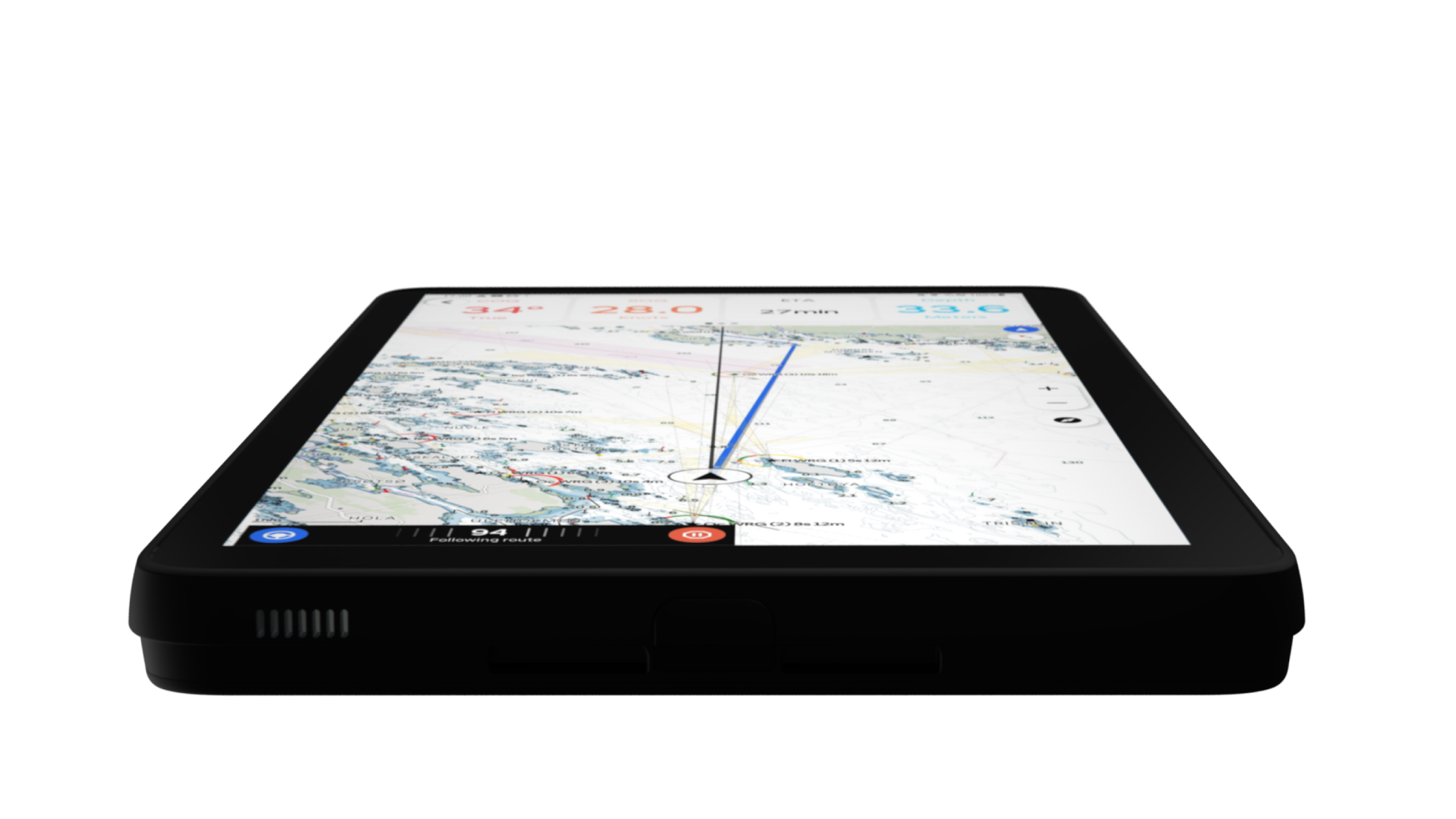
Advanced boat integration. Pinpoint accuracy. Total control.
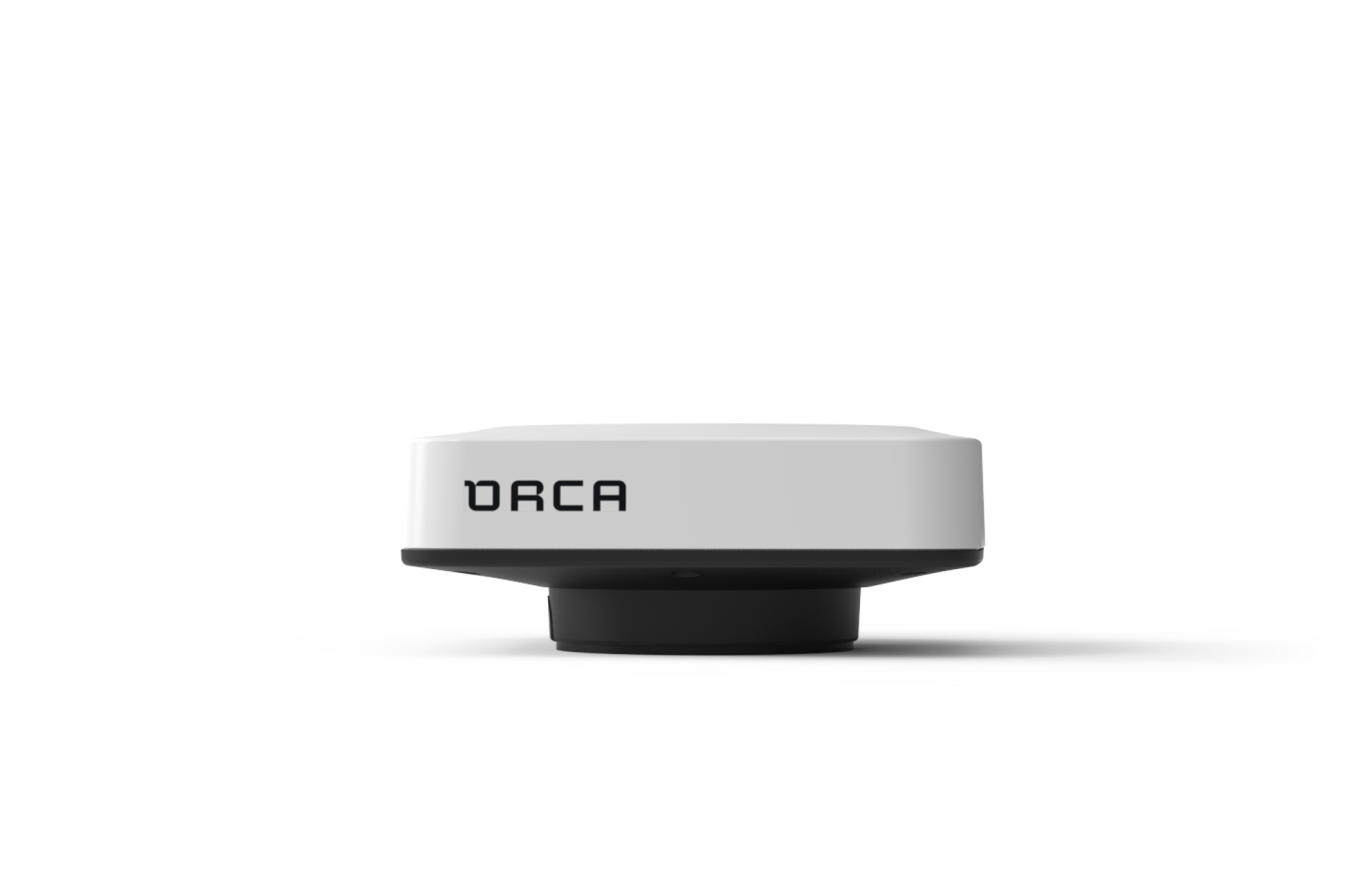
How can we help?
Contact us by phone, chat, or email – or learn about Orca with guides and articles.
The latest updates
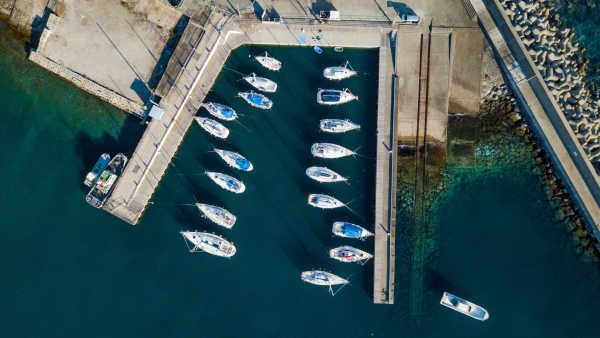
Remote Access
Check your vessel’s status from anywhere
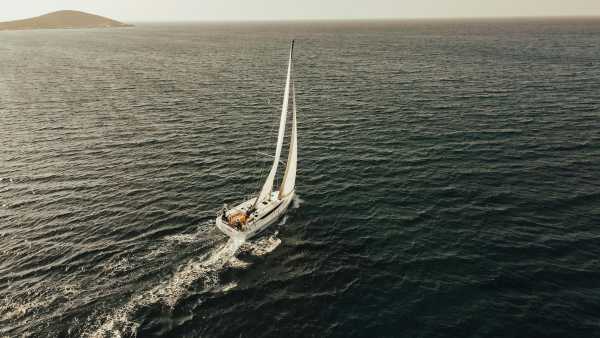
Introducing Rerouting for Sail Routes
A new approach to navigation for sailboats
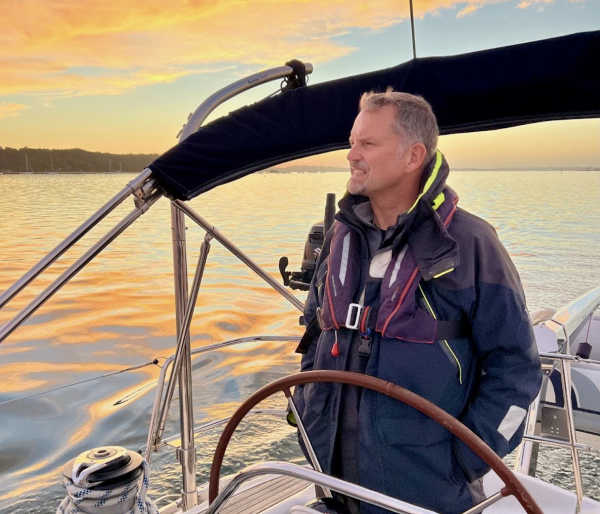
Alastair's journey with Orca
Learn how Alastair uses Orca onboard his Jeanneau and Linssen.

2024 © Orca. All rights reserved.
- BOAT OF THE YEAR
- Newsletters
- Sailboat Reviews
- Boating Safety
- Sailing Totem
- Charter Resources
- Destinations
- Galley Recipes
- Living Aboard
- Sails and Rigging
- Maintenance

Upgrading Your Boat Electronics
- By Ralph Naranjo
- Updated: November 6, 2014
Modern boat electronics provide a great benefit to sailors when it comes to navigation, weather, collision avoidance or just the plain fun of being under sail. So it’s no surprise that we cruisers regularly add to our gadget list, often mixing brands and coupling old with new. Often this raises compatibility issues, some of which lead to creative work-arounds and others to outright failure.
This mix of labels and vintages was all just fine in the stand-alone era, when a black box wasn’t lurking somewhere below, taking in data from an array of output devices and spewing it out to screens scattered from bow to stern. Oh, for the days when the chart plotter had yet to become today’s multifunction display! Some would even say that retaining this “stand-alone” mind set, where each unit has its own power cable, display and electronic autonomy, is the right answer when it comes to coping with a mix-and-match multibrand nav station. However, there are other options for boat electronics.
With the proper cables and devices, today it’s possible to interface an array of onboard instruments and enhance their ability to share a common data stream. These inputs can come from the masthead anemometer, the depth sounder transducer in the bottom of the bilge, or anything in between. This digital dialogue, at its most basic, relies on a stream of bytes running through special cables at nearly the speed of light. All are ducted to a controller area network (CAN bus) — a bit of automotive brilliance put to good use in the marine industry. Those with older, but not quite antique, boat electronic gear can sometimes use an instrument’s NMEA 0183 data feed to “talk” with more modern NMEA 2000-compliant devices, or even employ an analog-to-digital signal converter to breathe new life into older components. But the more esoteric the networking solution becomes, the bigger the bill and the more poignant the question: Is it really worth it?
To get a good answer, I spoke with boat electronics pro Bob Campbell of Annapolis, Maryland, who had sage advice when it comes to electronically interfacing a diverse gaggle of gadgets. His first priority is helping the boat owner consider electronic gear as a navigation system rather than individual components. Before focusing on specific brands, the next step is to develop a realistic two-column list of gear under the headings “Must Have” and “Might Want.”
Once that’s completed, Campbell’s advice is to steer clear of brand hopping to minimize the need to lash one manufacturer’s equipment to another’s network. Carefully consider the value, cost savings and reliability that come from brand allegiance. Focus on the essentials and go with the gear line that hits the most points in the Must Have column.
Admittedly, Campbell does a lot of “transmutations,” often turning an analog signal from older equipment into digital compliance, but it can be a costly and complicated process. He often reminds owners that there’s a point where Kenny Rogers’ “fold ’em” theory is the best way to play your hand.
When the right tack is a clean sweep to a new system, Campbell says, the result is faster processor(s), higher resolution, more user-friendly MFD, plus better reliability and more flexibility. A good resource when it comes to planning an electronics makeover is the manufacturers themselves. Many have already included some backward compatibility in their new gear, and can answer questions about which of their black boxes will converse with previously installed units. Naturally, they’d prefer you buy a whole new system, and that may be the best solution in the long run. But you can take baby steps: If you are pleased with the mainstay of the gear in your nav station, a partial upgrade can be a smart move.
Bring your lingering questions to a local or regional boat show to chat with a factory-trained technician familiar with your gear. A very typical questions is “Can I network my older wind instruments with my new MFD?” If the units are from the same manufacturer the answer is probably yes, but if interfacing requires more complex custom analog-to-digital signal conversion, it’s likely time to consider a wind-instrument upgrade or live with the apparent wind direction and speed as stand-alone data.
DIY Advice from the Pros
For those tackling their own electronics installations, there’s nothing more informative than watching a skilled team of pros go through a complete electronics refit. When I met with the crew of Annapolis-based Marine Electric Systems they were in the midst of a major makeover on a complicated 55-foot uber-networked cruising boat. The project was a lesson in how to set up a complicated network, and where the big challenges lie. Strict attention to detail was the underlying refrain. The crew crimped dozens of connections; securely sealed network cable plugs; and merged the antenna, digital compass and autopilot feedback leads. Little things like a loosely crimped connection could lead to moisture intrusion, corrosion and a changed impedance — a combination that’s not always easy to find and can cause lingering problems.
Campbell and crew stressed the importance of an owner’s developing a viable electronics game plan, one in which the operational goals merge with what’s technically achievable. In this case, the installation included an Ethernet, NMEA 0183/NMEA 2000 and proprietary cabled network with enough expansion capacity to cope with additional equipment. A sky’s-the-limit options list included dual GPS and GLONASS (the Russian equivalent of GPS) position inputs, and radar, AIS, weather and FLIR data streams can be overlaid on digital charts. There was also a desire to display this avalanche of information on large-format screens and on multiple displays. Fortunately, on this boat at least, the bad habit of breaking a 7-inch MFD screen into three sections to show cartography, a radar image and boat stats wasn’t considered. (In such situations, essential detail is hidden by the diminutive size of the screen.)
By the refit’s conclusion, it was clear that today’s top-end electronics installers have engineering and technical skills akin to what you’d find in the aviation industry. For the DIYer, there’s a lot to be learned.
As system complexity grows linearly, networking demands expand exponentially. For the self-reliant cruiser, consider limiting your needs to a fairly simple two-station system, and commit to single-brand allegiance. Installation becomes much easier and keeps the challenge of maintenance and operation within your grasp. If you have champagne tastes and a budget to match, find a skilled pro, work out a detailed quote and invest in a job well done.
The Screens Are Just the Start
When embarking on an electronics upgrade, remember that the retail price for the components is just the beginning. Each manufacturer has its own network architecture and proprietary waterproof cabling, control nodes, junction boxes, rate gyros, antennas, etc. The cost of options and the need for complex cabling increase with the number of peripherals to be networked. If planning a do-it-yourself project, look at the online installation manuals of the prospective gear. Most hardware comes with bracket mounts that eliminate the need for complex recessed joiner work. Even cockpit installations can be done using pre-manufactured pedestal-mount boxes, saving time and the need for special carpentry or fiberglass fabrications.
The really big-screen “glass helm” extravaganza seen on many motor yachts is a wonderful aid to navigation, but it’s overkill on the average cruising sailboat. The daily current consumption of such a system can be greater than the load your refrigeration places on the house battery bank. This means running the engine while you’re under sail in order to create power for the nav station. Part of the big-picture planning process is ensuring that the energy appetite of your networked electronics is in keeping with your boat’s battery bank. Engineering into the system an ability to turn individual equipment on and off — for example, to be able to run the depth sounder and chart plotter without activating unnecessary components in the network — is a big plus. After all, that’s exactly what you could do with the stand-alone architecture, an approach that still has a reasoned and vocal following.
Like many other sailors, I find myself overly attached to familiar equipment. Though I long ago switched to GPS, it took the U.S. Coast Guard’s curtailing Loran signal transmissions to get me to finally retire the receiver. Until recently, I’d held the same commitment to advocating for stand-alone electronic equipment. Aboard our sailboat, Wind Shadow, electronic simplicity had meant a GPS, sounder and conventional piloting/paper chart routine. But I finally made the transition, and wondered why I had waited so long. I like to think of this as a fully considered commitment to technology — not a borderline Luddite complex. Either way, I made a clean-sweep upgrade and did the work myself. The nav station on Wind Shadow now sports a 12-inch MFD chart plotter/radar combo that juggles a GPS signal, depth sounder input and a rate gyro signal to make the autopilot happy. I have leveraged one manufacturer’s components, cabling and installation wisdom. On the horizon is a smaller MFD for the cockpit.
Previously, I’d bootlegged a modern approach to navigation with Nobeltec software on my laptop and an iNavX app on my iPad (Luddite complex resolved!). But in case of bad weather, I wanted a fixed, waterproof, hands-free display installed in a known location. The reason I have the larger-screen MFD located below is that my wife, Lenore, and I sail double-handed and in tricky piloting situations we prefer the off-watch person to handle the radar and plotter down below while the person on watch tackles boat handling and keeps a lookout.
With this streamlined approach to networking, I found the manufacturer’s plug-and-play wiring to be quite straightforward. The radar uses an Ethernet link and all the other components use a mini-C or micro type of proprietary cabling. The biggest issues were the constraints imposed by joinery that made running wires through tight spaces and finding the right location for junction boxes a slight challenge. To minimize surprises during and after the installation, I set up the gear in my workshop and became familiar with the cabling and junction-box configurations ahead of time.
Furuno, Garmin, Navico (Simrad and B&G) and Raymarine have each committed to a sensible proprietary approach to networking onboard electronics. Each has its own unique features and user interface, so it’s up to you to investigate each and choose the overall system that best meets your needs. The navigational advantage such integrated packages offer is compelling, making it easier than ever to discern where you are and where you’re headed. What’s left is the responsibility of a crew to leverage all the value unleashed by such an electronic navigation network.
Ralph Naranjo is a frequent CW contributor.
This article first appeared in Cruising World March, 2014.
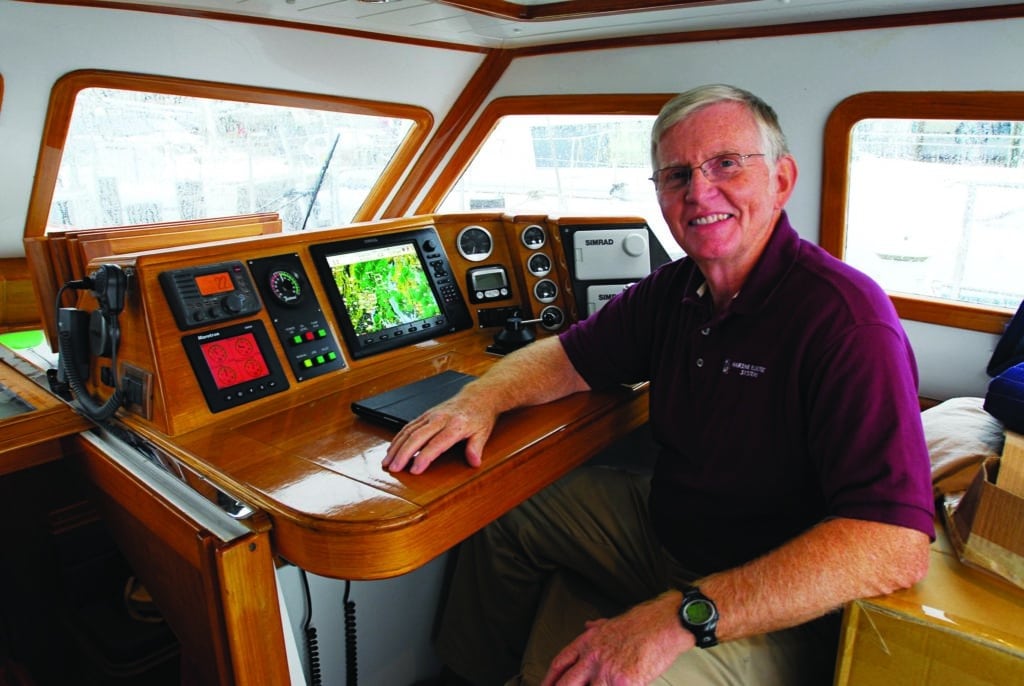
- More: boat maintenance , Electronics , Gear , How To
- More How To
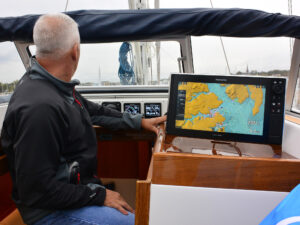
Adding Onboard Electronics? Here’s How To Get Started
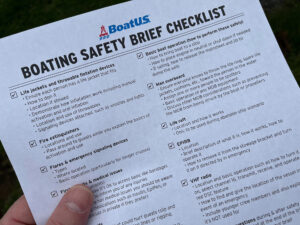
7 Boating Safety Tips for Summer Cruising
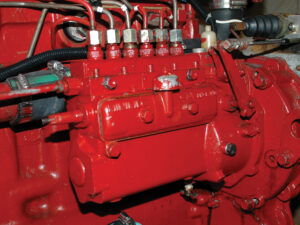
How to Prep for a Diesel You Can Depend On
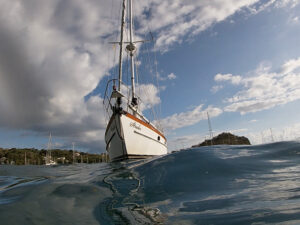
Anchoring in Paradise
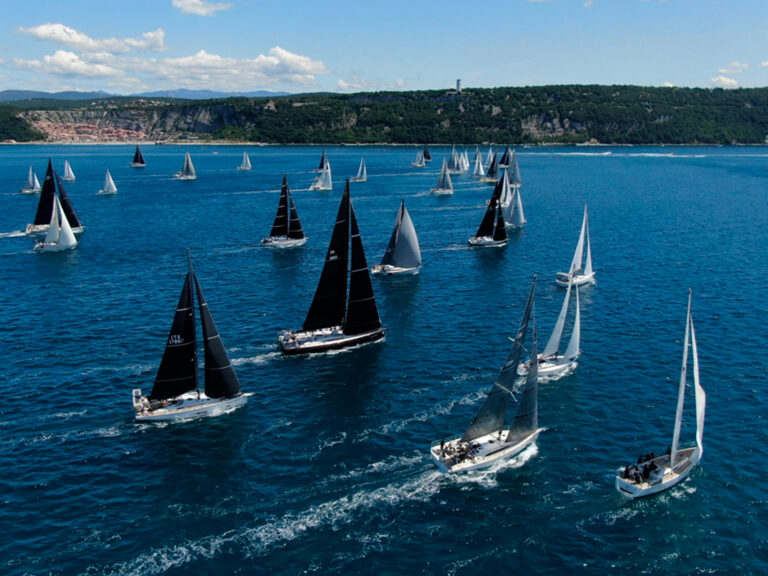
Grand Soleil Cup Gearing Up
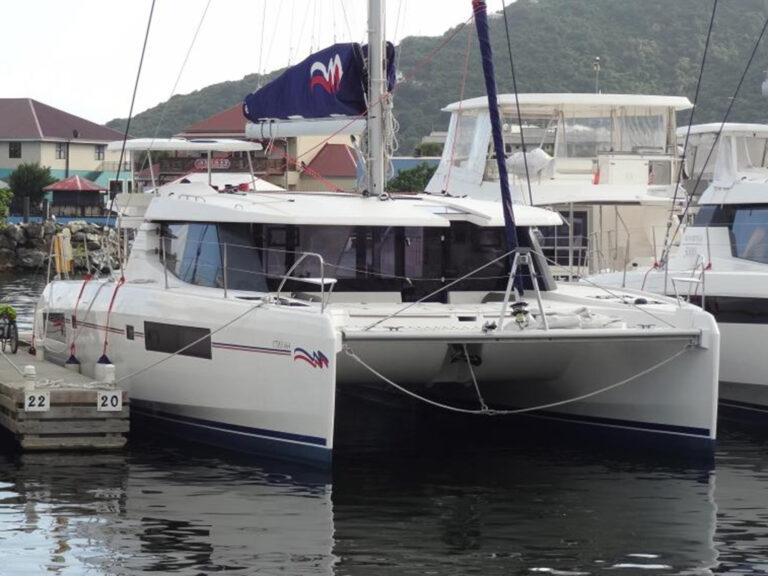
Now For Sale: Leopard 45
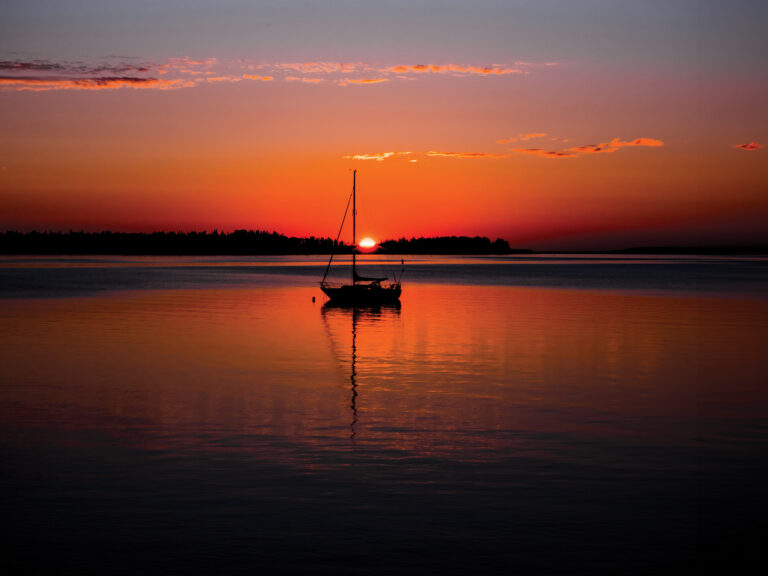
The Long Way Around

Sailing to the Land of Shrimp
- Digital Edition
- Customer Service
- Privacy Policy
- Email Newsletters
- Cruising World
- Sailing World
- Salt Water Sportsman
- Sport Fishing
- Wakeboarding

Marine Electronics
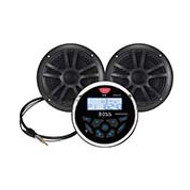
Marine Stereo Systems

Fish Finders & GPS

VHF Marine Radios

Marine Antennas
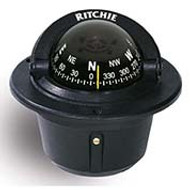
Marine Compasses

Depth Finders

Marine Binoculars
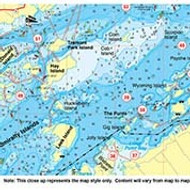
Charts & Maps
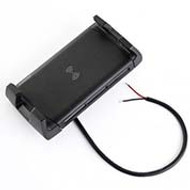
Phone & Tablet

Marine Electronics Mounts

Dual Marine 40" Wire AM/FM Marine Antenna
The Dual MAW40 AM/FM antenna includes a 40" long flexible wire. Features Flexible wire 40" long with plug

Shakespeare Watertite Marine Cable Outlet, Chrome Brass
Shakespeare Watertite Marine Cable Outlet Use this attractive, chrome brass, cable outlet to neatly pass cables through bulkheads. Its rubber internal grommet grips the cable and keeps water out. For RG-8/AU, 8X, 58, 59, 213 and Shakespeare LoMax coax...
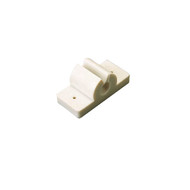
Sea Dog Antenna Clip
ANTENNA CLIP- Injection Molded Rubber. Securely holds down Antenna when not in use. Also can be used for fishing rods and boat hooks.

Anderson AM-FM Dual Mount Rubber Marine Antenna
Anderson AM-FM Dual Mount Rubber Marine Antenna This is a rubber antenna mount that can be used as a side Mount or a top mount. Comes complete with a 54" cable lead. Has an 180 degree swivel base.
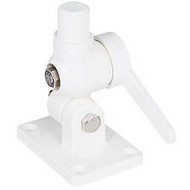
Shakespeare Marine Antenna Nylon Ratchet Mount
Shakespeare's Style 4186 Ratchet Mount features a versatile four-way ratchet design that adapts easily to vertical or horizontal surfaces, slanted or straight. Its simple design makes installation simple. The mount should not be used with antennas longer...

Shakespeare Gold Plated Marine Centerpin Connector
Shakespeare Gold Plated Marine Centerpin Connector No measuring. No soldering. No stripping. Installs in seconds using only wire cutters and pliers. For RG-8X and RG-58/AU Coax.

Shakespeare Stainless Steel Boat Antenna Mount
Shakespeare Stainless Steel Boat Antenna Mount Shakespeare's Style 4187 is a stainless steel ratchet mount featuring a versatile four-way design that adapts easily to deck or side mounting on slanted or level surfaces. Its simple design makes...

Ritchie F-50 Explorer Compass (Flush Mount) - Black
Ritchie F-50 Explorer Compass (Flush Mount) - Black 2 3/4" Easy to Read Direct Reading Dial Easily Installed, Fits 3.75" (9.53 cm) Mounting Hole. Internal Green Night Illumination Built-in Compensators to Easily Adjust for...

Boss Audio Rubber Ducky AM/FM Marine Antenna
Boss Audio Rubber Ducky AM/FM Marine Antenna Boss Audio MRANT12 Marine Rubber Antenna available with black or white finish. Specifications: Antenna Band: AM/FM Length (Inches): 12'
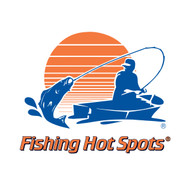
Lake of the Ozarks Fishing Map
Lake of the Ozarks, Missouri Fishing Map Fishing Hot Spots sets the standard for others to follow. It's the map successful anglers have asked for by name for more than two decades. Lake of the Ozarks is one of the Midwest's most productive fisheries...
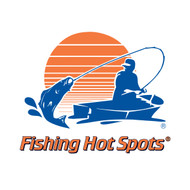

Lake Vermilion Fishing Map
Lake Vermilion, Minnesota Fishing Map Fishing Hot Spots sets the standard for others to follow. It's the map successful anglers have asked for by name for more than two decades. Lake Vermillion is ranked as one of the state's premier fisheries with...
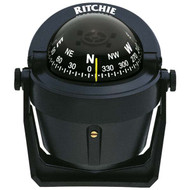
Ritchie B-51 Explorer Compass, Bracket Mount - Black
Explorer Compass Features 2 3/4" Easy to Read Direct Reading Dial Adjustable and Removable with Bracket and Thumbscrews Internal Green Night Illumination Built-in Compensators to Easily Adjust for Deviation Scientifically Matched Sapphire Jewel...

Sea Dog PL-259 VHF Radio Connector
Male UHF Connector PL-259 with reducer UG175U for RG-58/U Cable. Solder type.

Lowrance HOOK GPS Fishfinder TrackPlotter Transom Transducer
HOOK²-4x 4" GPS Bullet Fishfinder with Track Plotter Transom Mount Bullet Skimmer TransducerThe world’s easiest fishfinder, HOOK2 4x Bullet offers simple menus, easy access to key functions and Autotuning sonar. Powered by proven...

Ritchiesport X-23 In-Dash Marine Compass - Black
Ritchiesport X-23 In-Dash Marine Compass - Black The Ritchie RitchieSport Marine Compass is a reliable navigation tool for boaters that is easy to install. This compass installs right into your dash, fitting standard 2" gauge holes. RitchieSport...
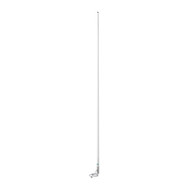
Shakespeare Classic 8' VHF Antenna
Shakespeare Classic 8' VHF Antenna The Shakespeare Classic VHF Antenna features a smooth, high gloss, polyurethane finish that protects it from the sun. With a fiberglass construction and chrome-plated brass ferrule with standard 1"-14" thread, this...
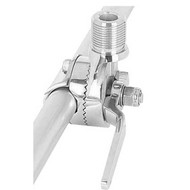
Shakespeare Stainless Steel Boat Antenna, Rail Mount
Shakespeare Stainless Steel Boat Antenna, Rail Mount Ratchet action, designed for quick and easy installation on 7/8" and 1" vertical or horizontal rails. 9/32" hole for cable feed-through. Handles antennas up to 8' standard 1"-14 thread...

Shakespeare Marine Antenna Mount Shim Kit
Shakespeare Style 414 Shim Kit for Ratchet Mounts Heavy duty rubber Each shim adds a half-notch (five degrees) tilt Stackable for compound angles Stack at opposing angles to add height (for clearing obstacles on mounting surface) Four shims per...

TRAC Fishing Barometer
TRAC 69200 Fishing Barometer Using the TRAC 69200 Fishing Barometer, you can track pressure trends for greater fishing success. This handheld fishing barometer is easy to calibrate for local barometric pressure and has an adjustable pressure change...
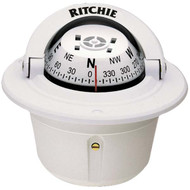
Ritchie F-50 Explorer Compass, Flush Mount
Explorer Compass Features 2 3/4" Easy to Read Direct Reading Dial> Easily Installed, Fits 3 3/4" (9.53 cm) Mounting Hole Internal Green Night Illumination Built-in Compensators to Easily Adjust for Deviation Scientifically Matched Sapphire Jewel &...
Marine Electronics & Navigation
As water and electricity do not generally mix well, it is important that USCG-mandated boat electronics and required navigation devices be water-tight and humidity-resistant. Wholesale Marine offers an extensive inventory of high-quality marine electronics and boat components that are safety regulation-compliant as well as those that simply add to our boating enjoyment.
Our selection includes:
- Alarms & Detectors : Sea Dog and Marine Technologies provide great options to ensure boating safety. Select from Hi-Water Bilge Alarm Systems, Marine Fume, Fire, and Flood Detectors as well as Carbon Monoxide Alarms.
- Antennas: To boost your craft’s “visibility” and to improve reception for your TV and other entertainment devices, we carry a selection of antennas which include Marine GPS Antennas, an amplifier/Booster kit for cell phones, Satellite Antennas for Sirius/XM radio reception. We even carry flat panel TV antennas to improve reception!
- Binoculars: whether you watch sea birds, whales and dolphins cresting, the horizon, or the shoreline, we carry precision binoculars from trusted brands such as Nikon , Bushnell , and ProMariner .
- Boat Audio Systems: Whether you are communicating ship to shore or enjoying music for entertainment, you’ll find your best options from Boss and other respected brands!
- Charts & Maps: Chart your course with our selection of navigational charts from Davis . We also have maps of local fishing hot spots located across the country.
- Compasses: Know where you’re going with the best from Brunton, Richie , and Optronics .
- Depth Finders: Choose from our selection of HawkEye’s dash-mount, digital readout depth finders.
- Engine Gauges: We carry the best from Sierra , Faria , and Sea Dog .
- Fish Finders & GPS Units: Use technology to find where the fish are biting! We carry units from Humminbird , Vexilar , Hawkeye , and Lowrance .
- Mounts & Holders: Mount aftermarket boat electronics and other devices securely with our options from RAM and Humming-bird.
- Two-Way Radios: We offer a great selection of two-radios from Cobra.
- VHF Marine Radios: Stay safe and regulation-compliant with our selection of devices from Uniden, Shakespeare, Sea Dog, ACR and more.
Wholesale Marine is your one-stop-shop for all things nautical, especially marine electronics. We offer same-day shipping on most items and a lowest price guarantee as well. When you join our Captain's Club Rewards Program you’ll be able to use the points you accumulate today towards future purchases. We offer flat rate shipping for $6.99. Just give us a call Monday through Friday from 9:00 AM until 6:00 PM EST at (877) 388-2628.
Subscribe to our Newsletter
Get the latest updates on new products and upcoming sales
Oops, something went wrong. Please try again.
You are now logged in!

Please verify you are a human
Access to this page has been denied because we believe you are using automation tools to browse the website.
This may happen as a result of the following:
- Javascript is disabled or blocked by an extension (ad blockers for example)
- Your browser does not support cookies
Please make sure that Javascript and cookies are enabled on your browser and that you are not blocking them from loading.
Reference ID: 71ff0475-158c-11ef-8517-f1e4e88d5eca
Powered by PerimeterX , Inc.

43 Facts About Bratsk
Written by Elvira Llamas
Modified & Updated: 18 May 2024
Reviewed by Jessica Corbett
- Industrial Center Facts
- Industrialization Facts
- Russia Facts
- Russian Architecture Facts
- Siberia Facts
- Tourism Facts

Bratsk, a city located in the Irkutsk Oblast region of Russia, is a hidden gem worth exploring. With a rich history and a vibrant culture, Bratsk offers a unique experience to its visitors. From breathtaking natural landscapes to architectural wonders, there is something for everyone in this enchanting city.
In this article, we will uncover 43 fascinating facts about Bratsk that will pique your curiosity and make you want to pack your bags and embark on an adventure. Whether you are a history buff, nature enthusiast, or someone who appreciates art and culture , Bratsk has it all. So, let’s dive into this incredible city and discover what makes it so special!
Key Takeaways:
- Bratsk, a city in Russia, boasts a rich history, stunning landscapes, and a vibrant community, offering a unique experience for residents and visitors alike.
- With its impressive hydroelectric power station, beautiful natural reserves, and diverse cultural scene, Bratsk is a city poised for promising growth and development.
Bratsk is a city in Irkutsk Oblast, Russia.
Located in Siberia, Bratsk is situated on the Angara River and is known for its breathtaking natural landscapes.
The city of Bratsk was founded on August 26, 1947.
It was established as a residential settlement for the workers of the Bratsk hydroelectric power station.
Bratsk is home to one of the largest hydroelectric power plants in the world.
The Bratsk Hydroelectric Power Station has a capacity of 4,500 MW and plays a significant role in Russia’s energy production.
The population of Bratsk is approximately 246,000 people.
It is the third-largest city in Irkutsk Oblast, after Irkutsk and Angarsk.
The name “Bratsk” is derived from the word “brothers”.
It symbolizes the unity and cooperation of the workers who contributed to the construction of the city.
Bratsk experiences a continental climate with long, cold winters and short, warm summers.
The average temperature in January is around -19°C (-2°F), while in July , it reaches an average of 18°C (64°F).
The Bratsk Reservoir, created by the damming of the Angara River, is one of the largest artificial lakes in the world.
It covers an area of 5,470 square kilometers (2,110 square miles) and provides opportunities for various water activities.
Bratsk is a major transportation hub in Siberia.
It has a well-developed railway system and is connected to other cities in the region through an extensive network of roads.
The city of Bratsk is known for its vibrant cultural scene.
It is home to several theaters, museums, and art galleries that showcase the rich history and traditions of the region.
Bratsk is surrounded by picturesque natural landscapes, including dense forests, mountains, and rivers.
The area offers opportunities for outdoor activities such as hiking, fishing , and wildlife watching.
The Bratsk Dam, which forms the Bratsk Reservoir, was completed in 1967.
It stands at a height of 124 meters (407 feet) and is an impressive engineering feat.
The construction of the Bratsk Hydroelectric Power Station required the relocation of several villages and towns.
Efforts were made to ensure the smooth transition and well-being of the affected residents.
Bratsk has a diverse economy, with industries including energy, metallurgy, forestry, and agriculture.
The city’s development is closely tied to the Bratsk Hydroelectric Power Station and the surrounding natural resources.
Bratsk is home to several educational institutions, including universities, colleges, and vocational schools.
It serves as an educational center for the region, attracting students from different parts of Siberia .
The people of Bratsk are known for their warm hospitality and welcoming nature.
Visitors to the city often praise the friendly atmosphere and genuine kindness of the locals.
Bratsk has a rich cultural heritage, with influences from various ethnic groups living in the area.
The city celebrates traditional festivals, music, and dance, reflecting the diversity of its population .
The Bratsk Fortress is an important historical landmark in the city.
It dates back to the 17th century and serves as a reminder of Bratsk’s significant role in the region’s history.
Bratsk is known for its delicious cuisine, which features traditional Siberian dishes as well as Russian favorites.
Visitors can enjoy hearty soups, smoked fish , and locally sourced berries and mushrooms.
The Bratsk Museum of Local Lore showcases the history, culture, and natural wonders of the region.
It is a must-visit for those interested in learning more about Bratsk and its surroundings.
Bratsk has a well-developed sports infrastructure and supports various athletic activities.
The city has produced many talented athletes who have competed at national and international levels.
Bratsk is surrounded by beautiful nature reserves and national parks.
These protected areas are home to a wide range of flora and fauna, offering breathtaking sights for nature enthusiasts.
The Bratskaya street, one of the main streets in the city, is lined with shops, restaurants, and cafes.
It is a popular spot for locals and tourists to stroll, shop, and enjoy a meal.
Bratsk has a well-developed healthcare system, with modern hospitals and clinics.
The city prioritizes the health and well-being of its residents by providing quality medical facilities.
The Bratsk Opera and Ballet Theater is a cultural hub in the city, hosting performances by talented artists.
It showcases ballets, operas, and other musical events , attracting audiences from near and far.
Bratsk has a vibrant music scene, with local bands and musicians performing a variety of genres.
Music lovers can enjoy live performances at venues throughout the city.
The annual Bratsk International Film Festival celebrates the art of cinema.
It attracts filmmakers, industry professionals, and film enthusiasts from around the world.
The Bratsk Circus is a popular entertainment venue, featuring thrilling acrobatic performances and animal shows.
It offers fun-filled experiences for both children and adults.
Bratsk has a strong sense of community, with various civic organizations and volunteer groups working towards the betterment of the city.
Citizens actively participate in initiatives aimed at improving the environment, education, and social welfare.
The beautiful Bratsk City Park is a favorite spot for leisurely walks, picnics, and outdoor activities.
It offers a tranquil escape from the bustling city life.
Bratsk is known for its stunning sunsets, which paint the sky with vibrant colors.
The breathtaking views make for memorable moments and great photo opportunities.
The local markets of Bratsk are vibrant hubs of trade, showcasing a variety of local produce and goods.
Visitors can explore the stalls and sample fresh fruits, vegetables, and handicrafts.
Bratsk is an important center for scientific research and innovation.
The city is home to various research institutes and laboratories that contribute to advancements in different fields.
The Bratsk State University offers a wide range of educational programs across various disciplines.
It attracts students not only from Bratsk but also from other parts of Russia and abroad.
Bratsk is a city that embraces technology and digital connectivity.
The city’s infrastructure is well-equipped to meet the demands of the digital age.
Bratsk hosts various cultural events throughout the year, including music festivals, art exhibitions, and theatrical performances.
The city’s calendar is filled with opportunities to immerse oneself in the vibrant cultural scene.
Bratsk is a city where old traditions and modernity coexist harmoniously.
While the city embraces progress, it also values and preserves its rich cultural heritage.
Bratsk is surrounded by vast forests, making it an ideal destination for nature lovers and outdoor enthusiasts.
Hiking, camping, and wildlife spotting are popular activities in the area.
The Bratsk Philharmonic Orchestra is renowned for its exceptional performances and talented musicians.
It enchants audiences with a diverse repertoire that includes classical, contemporary, and traditional pieces.
Bratsk takes pride in its strong educational system, which emphasizes the importance of knowledge and skills.
It prepares the younger generation for bright futures and successful careers.
Bratsk is a city that celebrates diversity and promotes inclusivity.
It values the contributions of people from different backgrounds and fosters a sense of unity among its residents.
The Bratsk Mosque is an important religious landmark in the city.
It serves as a place of worship for the Muslim community and represents the city’s religious tolerance.
Bratsk is a city with a strong sense of environmental consciousness.
Efforts are made to protect and preserve the natural resources and promote sustainable practices.
Bratsk is a city that holds great potential for growth and development.
With its rich resources, vibrant community, and forward-thinking outlook, it is poised for a promising future.
In conclusion, these 43 facts about Bratsk showcase the fascinating history, natural wonders, and cultural significance of this city. From being home to one of the world’s largest hydroelectric power stations to boasting stunning landscapes like Lake Baikal and the Taiga forests, Bratsk has something for everyone. Its rich history, with traces of ancient civilizations and Soviet-era industrial development, adds a unique charm to the city.Whether you’re interested in adventure tourism, exploring historical sites, or simply immersing yourself in the local culture, Bratsk offers a myriad of experiences. The city’s warm hospitality, friendly locals, and delicious local cuisine make it a memorable destination for travelers.Don’t miss the opportunity to witness the breathtaking beauty of Bratsk. Visit this city and unlock its hidden gems, unforgettable experiences, and the chance to create lifelong memories.
Q: When is the best time to visit Bratsk?
A: The best time to visit Bratsk is during the summer months of June to August when the weather is pleasant and outdoor activities are in full swing.
Q: How do I get to Bratsk?
A: Bratsk can be reached by air through the Bratsk Airport, which has regular flights from major cities in Russia. Alternatively, you can also travel by train or bus from neighboring cities.
Q: Are there any popular attractions in Bratsk?
A: Yes , Bratsk is known for its popular attractions such as the Bratsk Hydroelectric Power Station, Lake Baikal, Taiga forests, and the Bratsk Reservoir.
Q: Is Bratsk safe for tourists?
A: Yes, Bratsk is generally safe for tourists. However, it is always advisable to take necessary precautions and be aware of your surroundings, especially in crowded areas.
Q: What are some traditional dishes to try in Bratsk?
A: Some traditional dishes to try in Bratsk include Siberian pelmeni, omul fish, stroganina, and local berry desserts.
Bratsk's stunning landscapes beckon nature enthusiasts to explore the wonders of the taiga biome, where cold climates shape unique ecosystems. This Russian city shares its rich history and culture with other fascinating destinations like Orenburg, inviting travelers to discover the depth and diversity of Russia's urban tapestry. Bratsk's massive hydroelectric power plant stands as a testament to human ingenuity, harnessing the immense potential of flowing water to power homes and industries, showcasing the transformative impact of hydroelectric technology .
Was this page helpful?
Our commitment to delivering trustworthy and engaging content is at the heart of what we do. Each fact on our site is contributed by real users like you, bringing a wealth of diverse insights and information. To ensure the highest standards of accuracy and reliability, our dedicated editors meticulously review each submission. This process guarantees that the facts we share are not only fascinating but also credible. Trust in our commitment to quality and authenticity as you explore and learn with us.
Share this Fact:

IMAGES
VIDEO
COMMENTS
Marine Charts for Sailing. Raymarine navigation displays give you the power to explore, plan and navigate the open water, with confidence. High definition displays and quad-core performance brings electronic charts from leading mapmakers to life. Enjoy fully featured vector charts, high-quality raster charts, plus advanced features like 3D maps ...
GPSMAP® 86sci. This handheld marine GPS provides everything you need for a safe day out on the water. With its built-in inReach® Satellite Communicator 1, it also acts as an emergency beacon. Install it at your helm or take it with you to a different boat — portable marine navigation, made easy.
B&G, the world's leading sailing electronics manufacturer, has been awarded a 2023 Top Product Award by Boating Industry Magazine for its new Zeus S chartplotter. The home of B&G Sailing. The leading manufacturer of Sailing Electronics including Chartplotters, Instruments & Autopilots around the world.
Online and in our stores, boaters find marine handheld GPS, chartplotters, marine autopilots, multi-function displays, marine radar and AIS transponders. West Marine also offers the best in sailing instruments to keep casual and competitive sailors abreast of wind speed and direction, depth and boat speed. All the top brands are represented ...
Here are some essential navigation electronics to consider for your sailboat: GPS Chartplotter. A GPS chartplotter is a must-have for any sailboat. This device combines GPS data with electronic charts to display your boat's position on a digital map. ... Equipping your sailboat with the right electronics is essential for a safe and enjoyable ...
A technician runs cables for an electronics upgrade aboard the adaptive sailing catamaran Impossible Dream. Courtesy NMEA/Gemeco Marine Accessories. Contemporary electronics can add a lot to a cruising sailboat. For starters, the gains often include easier-to-understand information, and therefore better situational awareness and increased ...
About Garmin. Garmin makes owning, navigating and fishing off a boat effortless. Simply turn on the device, follow the intuitive menu and immediately enjoy a day on the water. With everything from easy-to-use fishfinders to intricately networked systems and displays from 4"-24", Garmin masters boating needs for vessels of all shapes and sizes.
You're looking for our best, most up-to-date cartography for your Garmin chartplotter. Get it with Garmin Navionics+ integrated mapping solutions. Garmin marine products include chartplotters, fishfinders, transducers, sonars, autopilots, boat radios and much more.
B&G is the acknowledged industry leader in sailing-specific marine electronics, and was the first to bring a full range of sailing support features to a consumer-oriented electronics package. The Vulcan 7 continues this tradition, wrapping an impressive array of sailing-specific features into a compact, durable, and affordable chartplotter.
While trying to figure out how to install a basic digital navigation network on my own boat, I had been doing a head-to-head comparison: an iPad loaded with iNavX versus a B&G Vulcan multifunction display. At the chart table, they both excelled, but in real-world sailing conditions, the multifunction display had several important advantages.
Orca is navigation for the modern boater. Meticulously designed to help you plan and find your way at sea, without getting in your way. ... A new approach to navigation for sailboats. April 4, 2024 • 2 min. Alastair's journey with Orca. Learn how Alastair uses Orca onboard his Jeanneau and Linssen. March 20, 2024 • 4 min. View More.
Simrad offers a wide range of manuals, How To Videos, service programs, and software updates to support you. Find Out More. Simrad is a leading global manufacturer of Marine Chartplotters, Autopilots & Entertainment for sports fishing boats, motor boats & luxury cruisers.
Kenny Rogers knows when to hold em, knows when to fold em. When it comes to a boat electronic upgrades, we should learn to do the same. Modern boat electronics provide a great benefit to sailors when it comes to navigation, weather, collision avoidance or just the plain fun of being under sail. So it's no surprise that we cruisers regularly ...
We offer flat rate shipping for $6.99. Just give us a call Monday through Friday from 9:00 AM until 6:00 PM EST at (877) 388-2628. Wholesale Marine stocks marine electronics that will add to your boating enjoyment including audio systems, binoculars, and fish finders. Shop now.
electronics & navigation. gps & radar. multifunction packages. CONTACT WEST MARINE. Live Chat. 1-800-262-8464. Store Locator. Shop multifunctional packages at West Marine including GPS, radar and more from Garmin, Simrad and other top brands. Get free shipping to home or in-store!
Some of the top brands include Garmin, Raymarine, Simrad, Lowrance, Furuno, and Humminbird. Top marine audio manufacturers include Fusion, JL Audio, Wet Sounds, and more. What Are the Essential Marine Electronics For Any Boat? (show/hide) It is always recommended to carry GPS, VHF, depth finder/sounder/sonar, and chartplotters onboard.
The Angara (Russian: Ангара́, [ənɡɐˈra]; Buryat: Ангар, Angar, lit. "Cleft" [citation needed]) is a major river in Siberia, which traces a course through Russia's Irkutsk Oblast and Krasnoyarsk Krai.It drains out of Lake Baikal and is the headwater tributary of the Yenisey. It is 1,849 kilometres (1,149 mi) long, and has a drainage basin of 1,039,000 square kilometres (401,000 ...
Marine Charts for Sailing. Raymarine navigation displays give you the power to explore, plan and navigate the open water, with confidence. High definition displays and quad-core performance brings electronic charts from leading mapmakers to life. Enjoy fully featured vector charts, high-quality raster charts, plus advanced features like 3D maps ...
OKTMO ID. 25604000. Bratsky District ( Russian: Бра́тский райо́н) is an administrative district, one of the thirty-three in Irkutsk Oblast, Russia. [1] Municipally, it is incorporated as Bratsky Municipal District. [7] It is located in the northwest of the oblast. The area of the district is 33,660 square kilometers (13,000 sq mi ...
History. The first Europeans went to the area in 1623 to get taxes from the local Buryat people. Permanent settlement started with the building of an ostrog ().This fortress was built in 1631 at the junction of the Oka and Angara rivers.. During World War II, Siberia became more industrialized.This was because the Soviet Union wanted to move its industry to the area east of the Ural Mountains.
Bratsk, a city in Russia, boasts a rich history, stunning landscapes, and a vibrant community, offering a unique experience for residents and visitors alike. With its impressive hydroelectric power station, beautiful natural reserves, and diverse cultural scene, Bratsk is a city poised for promising growth and development. Table of Contents.